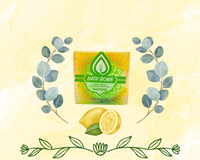
What is symbiosis?
Symbiosis originated from the Geek word symbiōsis, meaning "state of living together," as the relationship between two different organisms in a close physical association. Among the several different types of symbiotic relationships, hemp and bees have a mutualistic relationship where each organism benefits from their interactions with each other. As bees are foraging for pollen as a food source from hemp they also transfer the pollen from male to female hemp plants which aids in pollination.
What is pollination?
Pollination is the natural process by which plants sexually reproduce through the transfer of pollen (reproductive cells) from male to female sex organs. Pollen is released from stamens of a male flower and transferred to the pistil of the female flower to fertilize eggs and eventually create the seeds of a new generation. There are a few plant species that are able to self pollinate although many types of plants rely on cross pollination which requires a vector or means of transferring the pollen such as insects, animals or winds.


How do bees benefit from the pollen they collect from hemp?
Bees rely on both nectar and pollen as it’s two main sources for nutrition. Nectar is a sugar rich liquid that provides carbohydrates needed to produce energy while pollen provides primarily proteins, but also fats and other nutrients. Even though hemp does not produce nectar as a predominantly wind pollinated plant, it does produce copious amounts of pollen.

Bees cannot actually digest pollen in its raw form due to pollen core being covered in a layer of cellulose and many pollens also have a protective indigestible coating of wax. Instead bees use the pollen as a primary ingredient to make beebread used to feed their larvae or young developing bees. After collecting enough nectar and pollen, worker bees will fly back to their colonies where in-hive bees will make beebread by tightly packing the pollen into comb cells with a mixture of around 25% nectar, 70% pollen, and 5% bee saliva with plenty of enzymes. This mixture goes through a process of lactic acid fermentation similar to that of yogurt and other fermented milk products, and after nearly three months becomes the finished product that will nourish their larvae.

Diversity and abundance of bees discovered in flowering hemp fields
A study by the Department of Soil and Crop Sciences from Colorado State University in Fort Collins, CO collected some data that suggests that bees are attracted to hemp as a plentiful source of pollen that could be vital to bee colony health while also promoting more efficient pollination for hemp. Entomology student Colton O’Brien and his adviser Arathi Seshadri set up a trapping survey for a full month on two experimental hemp plots in northern Colorado to collect data on the abundance and diversity of bees that are attracted to hemp.
 European honeybee, Apis Mellifera
European honeybee, Apis Mellifera
Colorado is the home of 66 different bee species and O’Brien found that 23 of these 66 gravitated towards the flowering hemp. Of the 23 collected for data, “the European honeybee, Apis mellifera at 38% of the total abundance was the most dominant followed by Melissodes bimaculata at 25% and Peponapis pruinosa at 16%. These three genera made up nearly 80% of the total abundance.” Hemp flowering in northern Colorado usually occurs between the end of July and the end of September, when there is a scarcity of other pollinator friendly crop plants in the region which could make hemp useful to colony health during seasons when other plants are not producing as much pollen.
O’Brien expresses in conclusion of the study that “While hemp does not produce any nectar, the pollen rich nature of the flowers can make hemp an ecologically valuable crop. As cultivation of hemp continues to expand, we expect insect pests on hemp to also become prevalent. Our results documenting bee diversity in flowering hemp provides the impetus for the development of integrated pest management plans that protect pollinators while controlling pests.” Thanks to the 2018 Farm Bill, which states that industrial hemp is legal federally there is now much more accessibility for farmers to grow hemp. Although with more hemp being cultivated there comes a higher ecological responsibility for farmers to ensure that pollinators like bees are not harmed by pesticides.
A decline in bee population
There is a lot of buzz about bees, and that is not just to say the sound they make while flying nearby. Rather it is more of an issue when we may no longer be able to hear their buzzing at all, for bees along with many other pollinators such as butterflies, wasps, and flies play a critical role in pollination for a large portion of our agriculture, and this may also include industrial hemp used for CBD oil extractions. Bees are considered by many scientists to be a keystone species, where the ecosystem may collapse without them.

According to GreenPeace, a non profit organization dedicated to protecting bees, there has been a significant decrease in bee populations by as much as 40% in the US since 2006 and we are in a pollination crisis. They explain that “without insect pollination, about one third of the crops we eat would have to be pollinated by other means, or they would produce significantly less food. Up to 75% of our crops would suffer some decrease in productivity.” These crops include vegetables, fruits, and nuts, although the list of crops aside from hemp that could benefit from pollination from bees is extensive.
GreenPeace Research Laboratories published a technical report about “Bees in Decline,” that highlights some potential factors that could each contribute to the decline of bee populations including:
- Pests, Pathogens, and viruses:
- There may be many different pests that could pose a threat to colony health however one of the most common threats is the parasitic mite with the foreboding name of the Varroa destructor. The United Nations Environmental Programme (UNEP) describes the Varroa as “small mite the size of a pinhead, which feeds on the blood of the bee and spreads from hive to hive. In addition to weakening the bees, Varroa can also spread viral diseases and bacteria. Its effects are severe and, if left uncontrolled, usually lead to the early death of colonies within three years,”(UNEP, 2010). This is a prime example of another type of symbiosis called parasitism where one species thrives while the other is harmed.
- The ability of bees to resist the threats of pests, pathogens and viruses correlates to their nutrition and exposure to toxic chemicals such as pesticides.
 Varroa Destructor mite feeding on bee (right) and microscopic image (left)
Varroa Destructor mite feeding on bee (right) and microscopic image (left)
- Industrial agriculture and malnutrition:
- As industrial agriculture rapidly expands this may involve the removal of woody vegetation such as grasslands, old fields, shrublands, forests and hedgerows that act as natural nesting grounds for bees.
- A common practice in agriculture is the use of monoculture, meaning only one plant is harvested on a plot at one time. This limits the biodiversity of plant species for bees to collect pollen from. Having genetic diversity of pollen to collect within proximity to their hive provides a more nutritional diet for bees.
- Climate change may cause plants to change their flowering times and patterns which could cause a phenomenon called a “season creep” where plant flowering no longer coincides with the emergence of bees in the spring.

- Exposure to harmful chemicals:
- There have been several studies conducted on the effects of pesticides and insecticides used on flowering plants that suggest that they could contribute to numerous health problems for bees ranging from physiological to psychological effects.
- A few insecticides are systemic, meaning that when they are applied to a plant they do not solely remain outside but enter the plant system to travel through it and persist in even the plant’s pollen and nectar that bees need to flourish.

Hemp as a potential solution
Hemp flowering usually occurs in times when other plants are not producing enough pollen to sustain bee colonies so that means that hemp could play a vital role in increasing bee populations. Having plentiful sources of pollen means that bees could feed more of their young by making beebread, and by increasing bee populations that could also generate more efficient pollination for hemp and other plants. This is a harmonious cycle of nature, a symbiosis where each species thrives off of each other as a true mutualistic relationship.




























